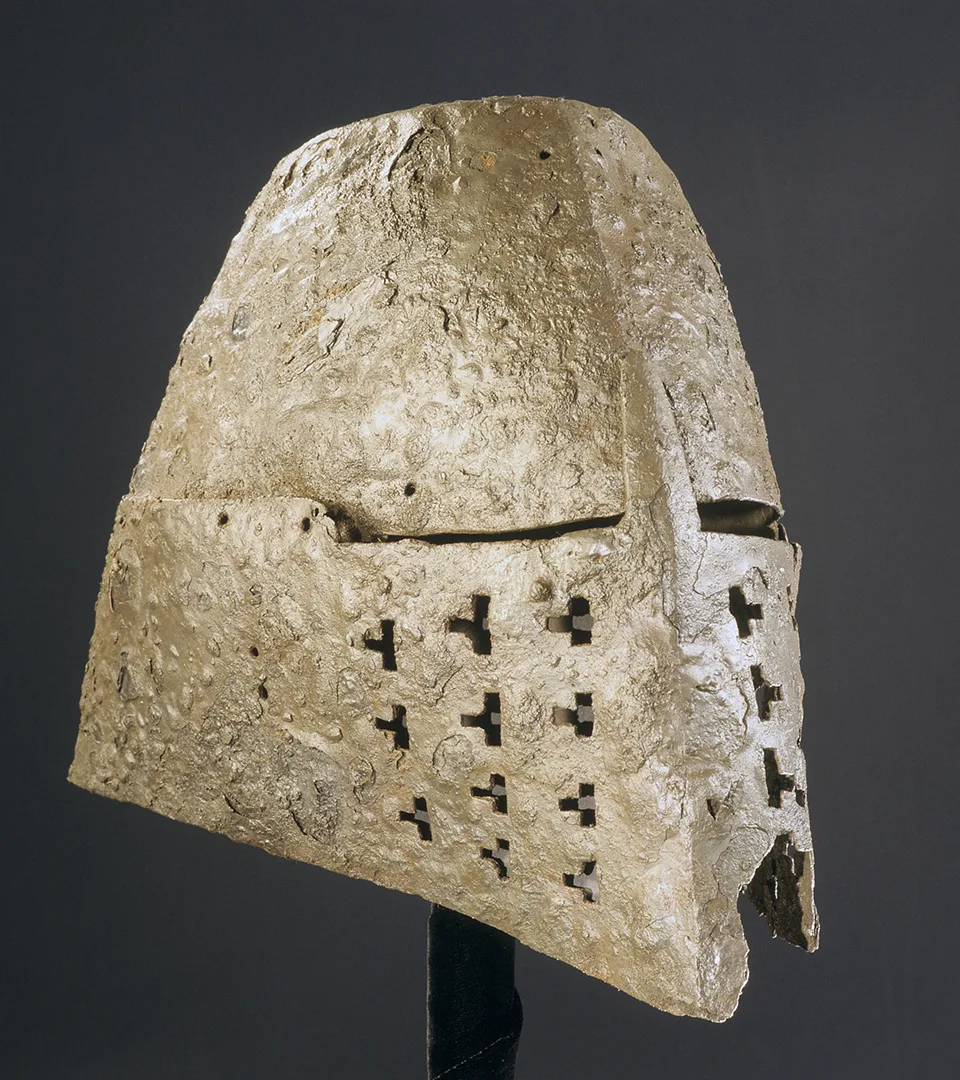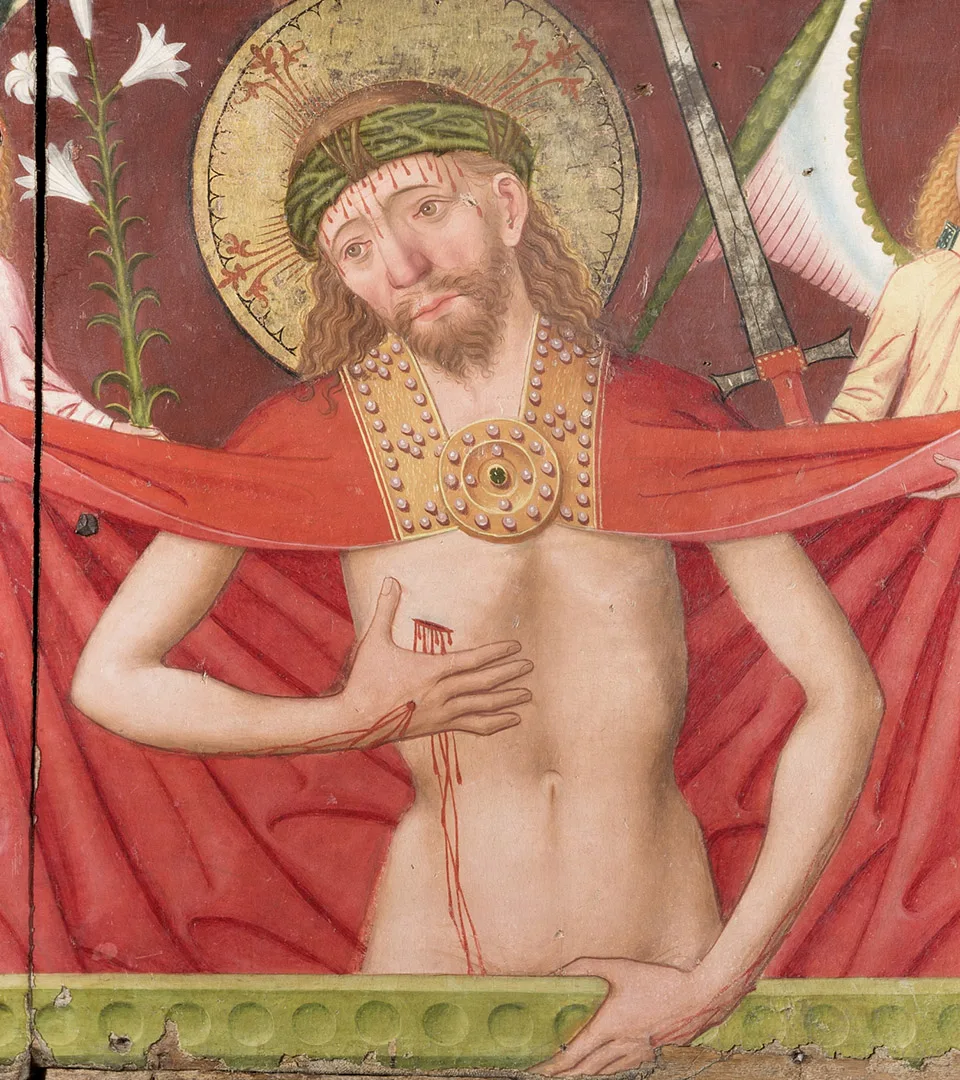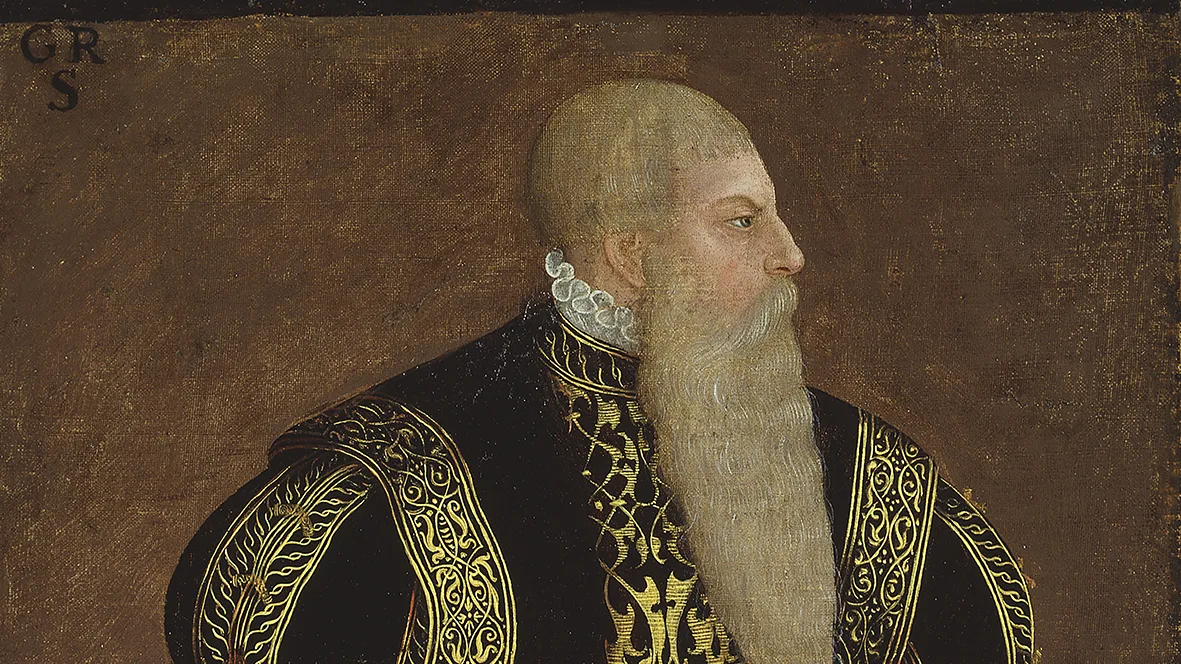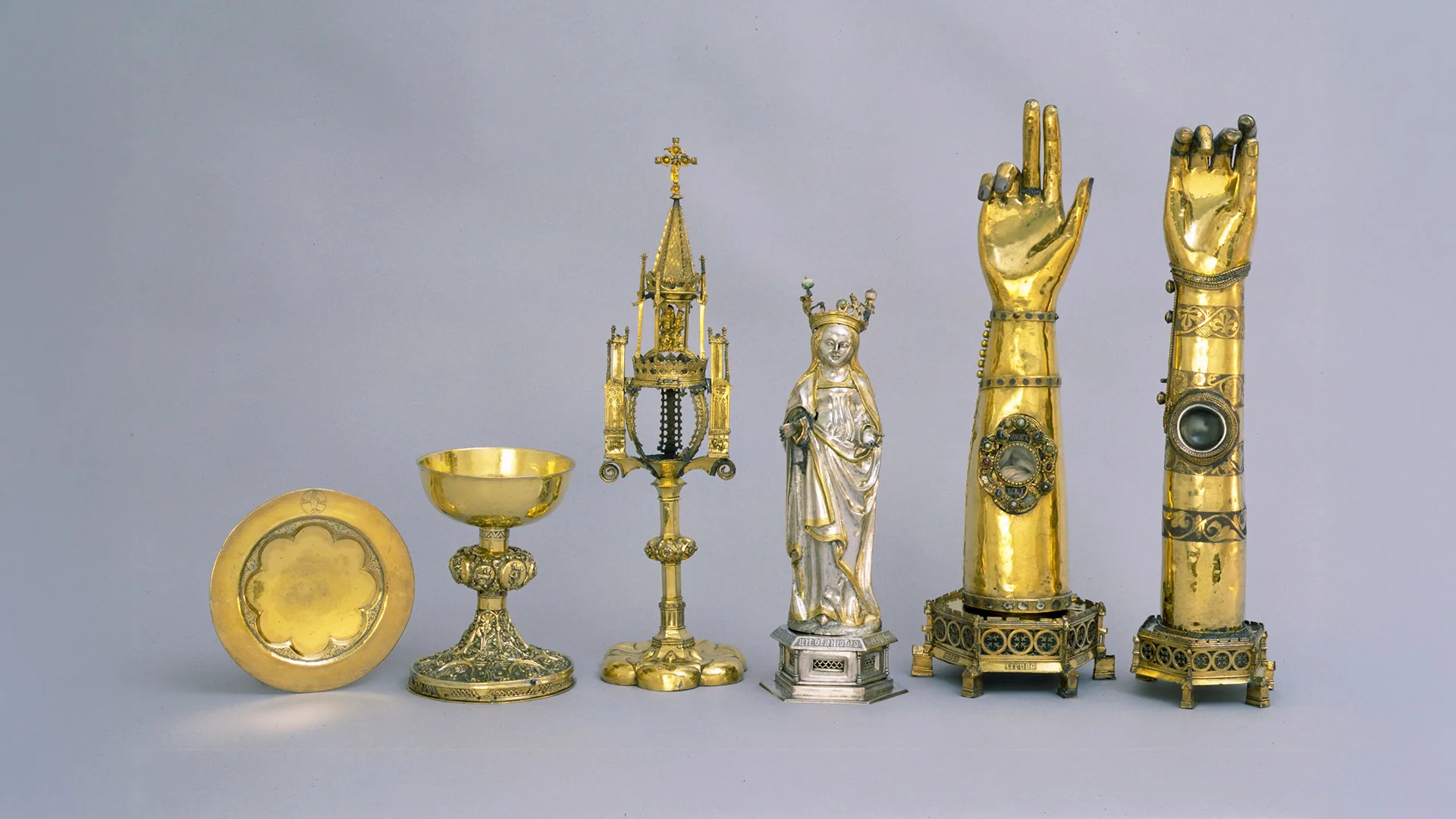The mysterious carpet
Viking Age
AD 800 – AD 1100
Middle Ages
AD 1050 – AD 1520
Modern Age
AD 1520 – AD 2025
The carpet is made entirely of wool and features tightly knotted rows using the Ghiordes knot (also known as the Turkish knot). Despite heavy use, much of its lustre and vibrant colours remain. On the reverse side, loosely but symmetrically placed rya-like knots with threads about ten centimetres long can be seen. This pile may have served as anti-slip protection or created an air gap beneath the carpet. In its country of origin, carpets were used as floor coverings, wall hangings, and blankets. The design features a “Tree of Life” motif and paired birds.
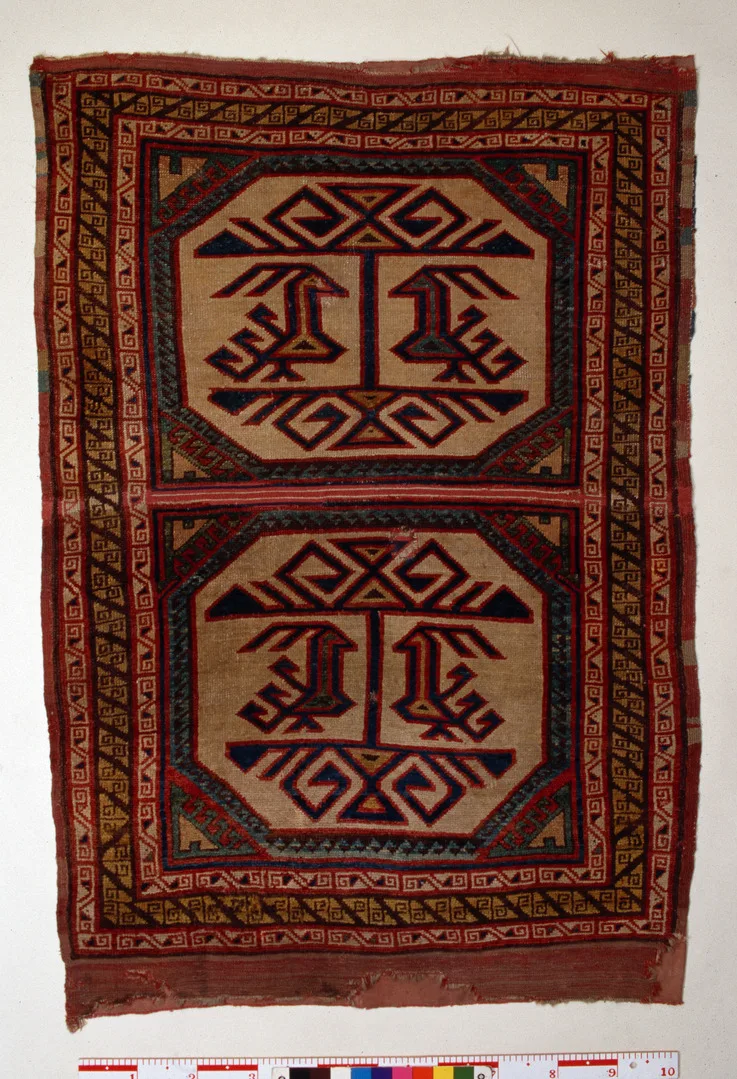
Carpet from Marby
The carpet’s journey to Sweden
Exactly how and when the carpet arrived at Marby Church is unknown. The church lies along the pilgrimage route to the Nidaros Cathedral in Trondheim. Perhaps a pilgrim brought it? More likely, the carpet was brought to Trondheim from Western Europe, possibly as a gift to the archbishop. At the time, such exotic and costly items were suitable offerings to high-ranking church officials.
From Trondheim, the carpet may have been passed on, worn and no longer novel, to Marby. In the Middle Ages, it was common for once-fine textiles to be repurposed for more everyday use within the Church.
It is also possible that the carpet belonged to a wealthy merchant or landowner and had only been in the Nordic region for a century or so.
At some point, the carpet was cut in half, with the two halves placed side by side. Older fabrics were also sewn onto it. It may have been used as an antependium, a decorative cloth on the front of an altar.
Oriental textiles were highly coveted possessions in medieval Europe, including within churches. Any cultural or religious differences were of little concern. When the carpet entered the collections of the Swedish History Museum in 1925, it was restored to its original form.
